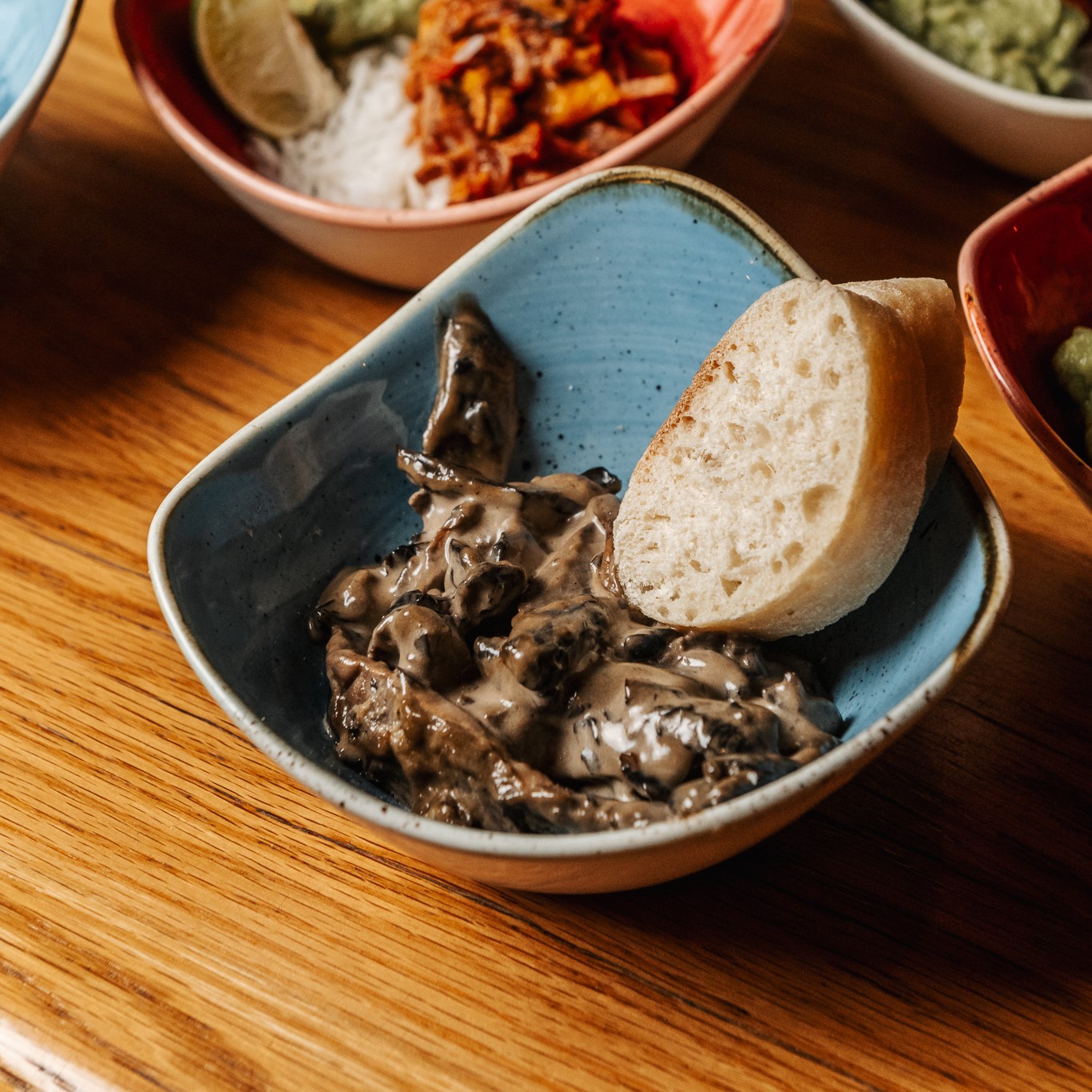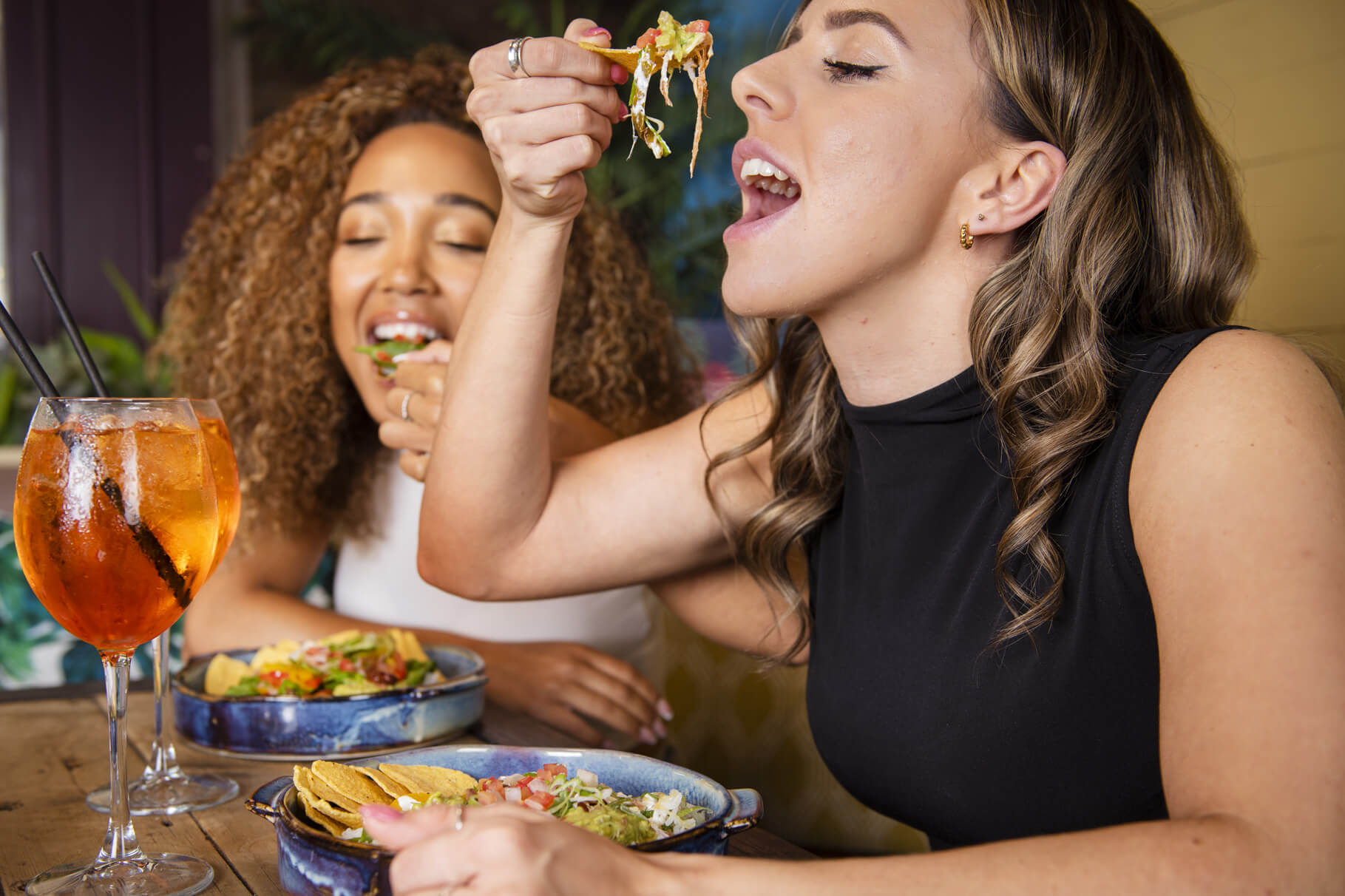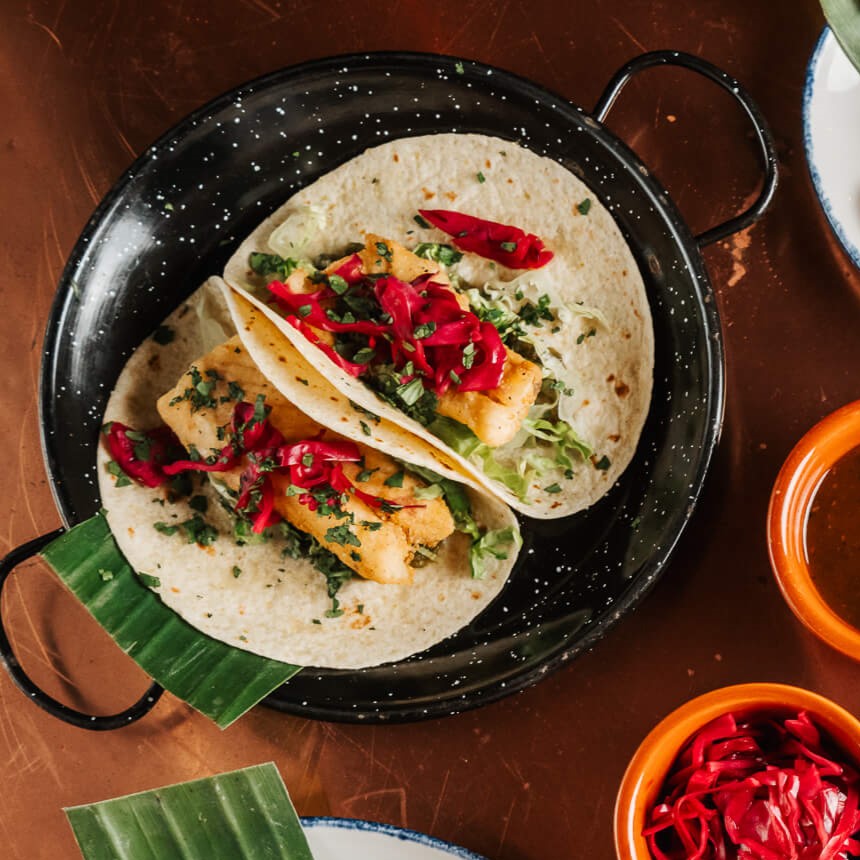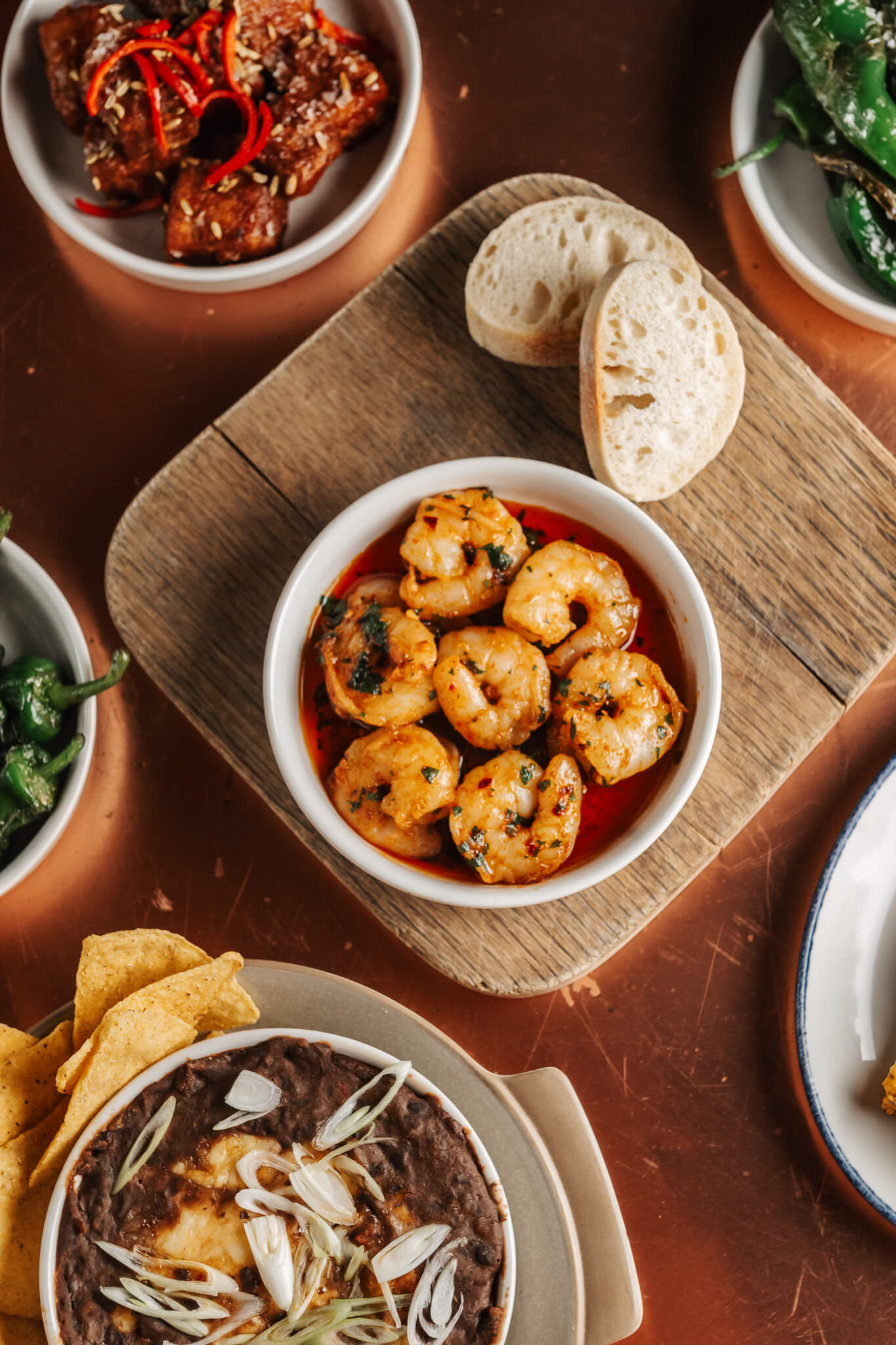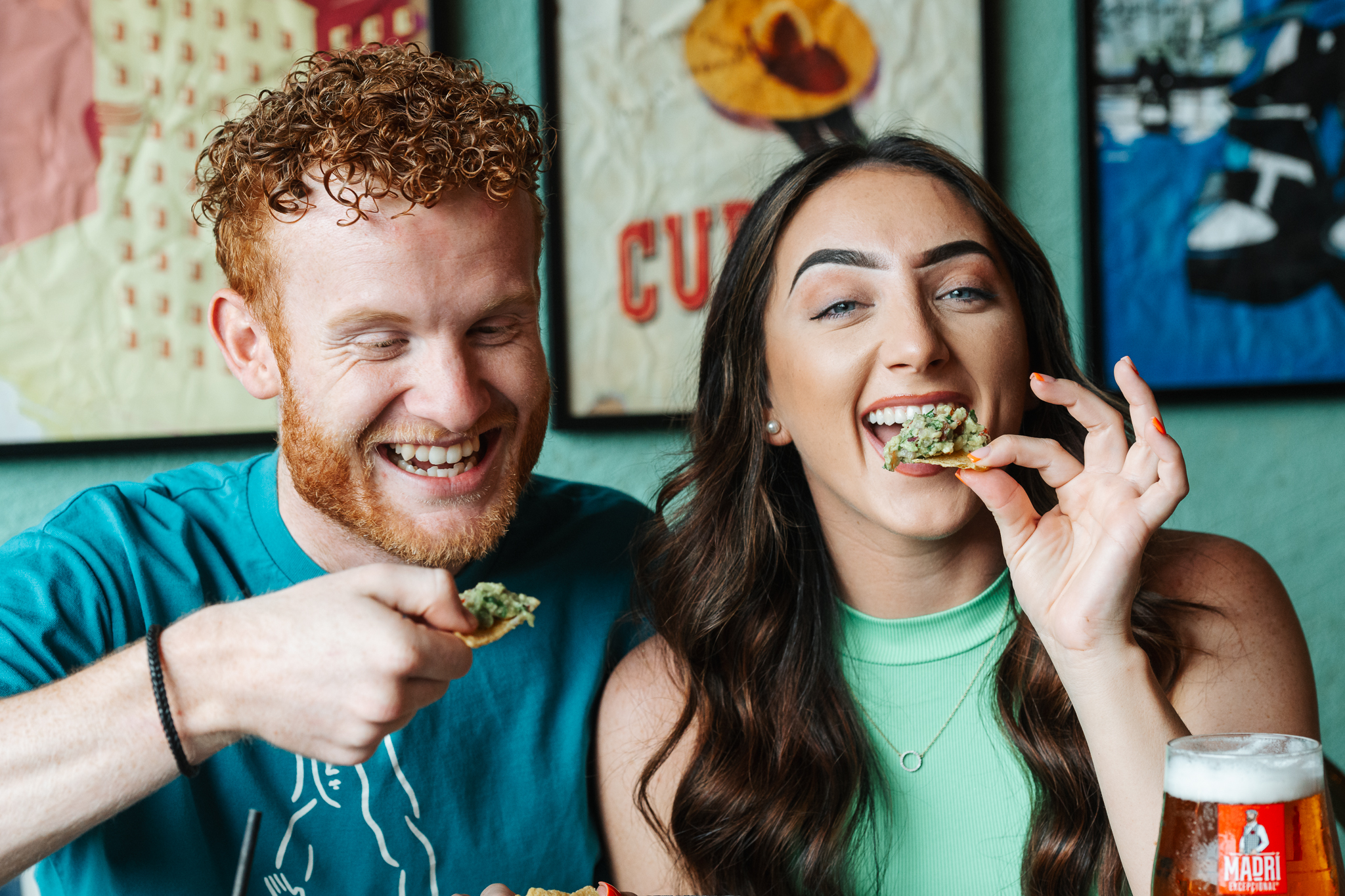Paella and Sangria, the perfect combination
Say hello to Bottomless Sangria and freshly cooked Paella with our Sangria Sundays.
We think it’s safe to say that Paella is a world-famous dish, and with good reason. Traditionally it’s a delicate balance of rice, saffron, vegetables, chicken and seafood that is cooked and served in one pan.
Everything is cooked and served in one pan and it’s guaranteed to satisfy.
Like most things, we’ve put our Revolución de Cuba twist on the dish and combined it with the classic Spanish drink; Sangria to bring you a new bottomless way to enjoy your weekend.
Read more below to discover why Sangria Sundays are your new favourite day to enjoy Paella.

Paella; A Brief History
Before we get started, let’s look at the origins of the dish!
It’s widely accepted that Valencia, Eastern Spain is the home of paella. It was originally a farmers dish served at lunchtime using rice and any ingredients available. This included tomatoes, onions, beans and snails! Don’t worry, as delicious as snails are our recipe doesn’t include any.
We bet you didn’t know that the name “La Paella” is actually the name for the pan the dish is cooked in, as opposed to the specific dish!
There are many different stories about the origin of the word, from the Latin word “Patella” which means pan (hence the Paella dish name) right through to the Arabic word “baqaayya” which means “leftovers”.
Wherever it came from, we’re sure glad it’s stood the test of time to become the dish we know and love today.
Paella at Revolución de Cuba
Paella has a special place in our hearts, so much so we put our name on the dish – Paella de Cuba. We also have a Paella Vegano which is just as delicious and equally as satisfying.
All of our Paellas are freshly prepared by our expert chefs and we’re so proud of our recipe, we’ve listed it below for you to try at home (or get excited about feasting on in our bars!)
Step One
Cut two mini chorizos into four slices, slightly angled for extra texture
Step Two
Heat the oil in a frying pan, add the chorizo and make sure it’s sealed on each side – this will release the flavoursome oils

Step Three
Add 100g chicken, and seal this on both sides
Step Four
Add the 80g prawns, and seal on both sides. We recommend King Prawns but any will work!
Step Five
Add your 250g Paella rice and 100g of vegetable stock – bring this to boil making sure to keep stirring

Step Six
Turn the head down slightly and cook all the ingredients together

Step Seven
Lightly colour half a lime on the grill, being sure to take extra care!
Step Eight
Add a little stock to loosen the paella and serve, make sure to show off all your ingredients for an extra wow factor

Step Nine
Garnish with pico de gallo, pickled onion, charred lime and coriander
Step Ten
Feast and enjoy!
If you’re making our Paella Vegano, be sure to follow these steps!
Step One
Cut 50g courgette into cubes, chop 50g broccoli and slice 50g flat mushrooms
Step Two
Heat the oil in a frying pan, add the broccoli, mushroom and courgette for two minutes
Step Three
Add a pinch of smoked paprika to the pan and then 50g peppers and of course, our favourite 50g tenderstem broccoli.
Step Four
Add your 250g Paella rice and 100g of vegetable stock – bring this to boil making sure to keep stirring
Step Five
Turn the head down slightly and cook all the ingredients together
Step Six
Lightly colour half a lime on the grill, being sure to take extra care!
Step Seven
Add a little stock to loosen the paella and serve, make sure to show off all your ingredients for an extra wow factor
Step Eight
Garnish with pico de gallo, pickled onion, charred lime and coriander
Step Nine
Feast and enjoy!
Feast on our Paella with Sangria Sunday
We’re not stopping there though, we’ve also given Paella its own day – Sunday!
You can join us every Sunday for Sangria Sundays and enjoy one of Paella dishes and Bottomless Sangria for 90 minutes for just £25pp. If you’re in Scotland, the offer includes two jugs of Sangria instead (this is due to licensing).
Sangria has been a popular drink for over 2,000 years! At the time, the water was widely known to be unsafe to drink so it was often fortified with alcohol (namely local wines) to kill off any bacteria.
Local fruits and spices growing in the area were added to disguise the taste – it became known as Sangre, which comes from the Latin word Sanguis which translates as blood and of course, links to the rich red colour of the well known beverage.
Over the centuries the recipe has been fine-tuned to create the Spanish drink we all know and love today.
We might be biased but we think they’re the perfect combination – naturally don’t take our word for it, click the link below to book your next Sangria Sunday at Revolución de Cuba.





